
Students will use GLOBE visualizations to display student data on mpas and to learn about seasonal changes in regional and global temperature patterns.
- Provider:
- The Globe Program
- Author:
- GLOBE
- Date Added:
- 06/24/2019

Students will use GLOBE visualizations to display student data on mpas and to learn about seasonal changes in regional and global temperature patterns.
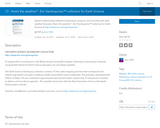
Explore relationships between temperature, pressure, and humidity with daily weather forecasts.
GeoInquiries are designed to be fast and easy-to-use instructional resources that incorporate advanced web mapping technology. Each 15-minute activity in a collection is intended to be presented by the instructor from a single computer/projector classroom arrangement. No installation, fees, or logins are necessary to use these materials and software.

In this investigation, students will look at a number of videos, animations, and images in order to gain a better understanding of how hurricanes work. In the first part, students will learn about some of the satellites that researchers use to study and make forecasts about hurricanes. Then students will get a chance to look "under the hood" of a hurricane to see how these storms develop.

In this section students will learn about The Saffir-Simpson Hurricane Scale.

In this activity students will learn how researchers use satellite data to study and forecast hurricanes.

In this activity students will learn about advances in computer models and observational methods which have made it possible to learn more about how hurricanes develop.

Students will use data to plot the path of a hurricane onto a map and then analyze the data and map to better understand hurricane formation.
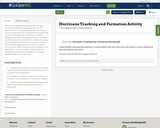
This activity is designed to guide students through a process-oriented lesson in analyzing data from the Tropical Storms - Esri GeoInquiries™ collection for Earth Science at http://www.esri.com/geoinquiries. Students will use storm tracking data from Hurricanes in 2005 to investigate the relationship between pressure and wind, as well as determine and explain the conditions that lead to the development of hurricanes and tropical storms.
This lesson was adapted from the resource:
"Tropical storms"
Author: GRACE
Project Provider: Michigan Virtual
Date Added: 11/21/2016
License: Creative Commons Attribution-NonCommercial-ShareAlike 3.0
Language: English
Media Format: Text/HTML
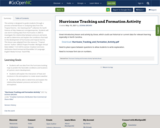
This activity is designed to guide students through a process-oriented lesson in analyzing data from the Tropical Storms - Esri GeoInquiries™ collection for Earth Science at http://www.esri.com/geoinquiries. Students will use storm tracking data from Hurricanes in 2005 to investigate the relationship between pressure and wind, as well as determine and explain the conditions that lead to the development of hurricanes and tropical storms.
This lesson was adapted from the resource:
"Tropical storms"
Author: GRACE
Project Provider: Michigan Virtual
Date Added: 11/21/2016
License: Creative Commons Attribution-NonCommercial-ShareAlike 3.0
Language: English
Media Format: Text/HTML
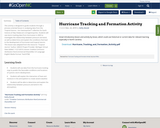
This activity is designed to guide students through a process-oriented lesson in analyzing data from the Tropical Storms - Esri GeoInquiries™ collection for Earth Science at http://www.esri.com/geoinquiries. Students will use storm tracking data from Hurricanes in 2005 to investigate the relationship between pressure and wind, as well as determine and explain the conditions that lead to the development of hurricanes and tropical storms.
This lesson was adapted from the resource:
"Tropical storms"
Author: GRACE
Project Provider: Michigan Virtual
Date Added: 11/21/2016
License: Creative Commons Attribution-NonCommercial-ShareAlike 3.0
Language: English
Media Format: Text/HTML
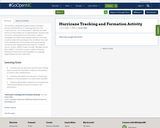
This activity is designed to guide students through a process-oriented lesson in analyzing data from the Tropical Storms - Esri GeoInquiries™ collection for Earth Science at http://www.esri.com/geoinquiries. Students will use storm tracking data from Hurricanes in 2005 to investigate the relationship between pressure and wind, as well as determine and explain the conditions that lead to the development of hurricanes and tropical storms.
This lesson was adapted from the resource:
"Tropical storms"
Author: GRACE
Project Provider: Michigan Virtual
Date Added: 11/21/2016
License: Creative Commons Attribution-NonCommercial-ShareAlike 3.0
Language: English
Media Format: Text/HTML
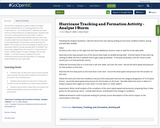
This activity is designed to guide students through a process-oriented lesson in analyzing data from the Tropical Storms - Esri GeoInquiries™ collection for Earth Science at http://www.esri.com/geoinquiries. Students will use storm tracking data from Hurricanes in 2005 to investigate the relationship between pressure and wind, as well as determine and explain the conditions that lead to the development of hurricanes and tropical storms.
REMIX: Tie-in Impact of storm by looking at specific storm data points before, during and well after US landfall.
This lesson was adapted from the resource:
"Tropical storms"
Author: GRACE
Project Provider: Michigan Virtual
Date Added: 11/21/2016
License: Creative Commons Attribution-NonCommercial-ShareAlike 3.0
Language: English
Media Format: Text/HTML
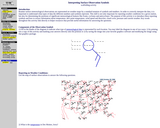
The purpose of this online tutorial activity is to introduce these reporting symbols and how to extract information about temperature, dew point temperature, wind speed and direction, cloud cover, pressure and current weather. Key words throughout this activity link directly to helper resources that provide useful information for answering the questions.

Students will practice drawing isotherms and isobars and locating air masses and areas of different pressures.

Students will use real maps, images, and data to develop an ozone forecast for a particular day in Charlotte, North Carolina. They will then check their forecast against the actual ozone forecast and measurements for that day. Students should already have experience reading weather maps and forecasting weather before doing this activity.
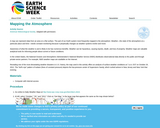
Students will analyze a map that shows the surface weather conditions for Superstorm Sandy.

This site displays a click-and-zoom map of the US showing forecast temperatures as well as several other meteorological variables, normally updated every hour. Also available are maps showing chance of precipitation, temperature and wind, weather, dew point, weather, precipitation, dew point and cover.

In this activity, students will explore their location's climate in order to inform a pen pal of the type of weather he or she can expect to experience during an upcoming visit. Students will generate and explore a variety of graphs, charts, and map images and interpret them to develop your understanding of normal climate.

Students interpret hurricane data (station model data, isobars, wind direction) to find the relationship between pressure gradients and wind speed.
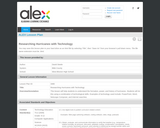
In this interdisciplinary lesson, students use a combination of technological skills to understand and explain the formation, power, and history of hurricanes.